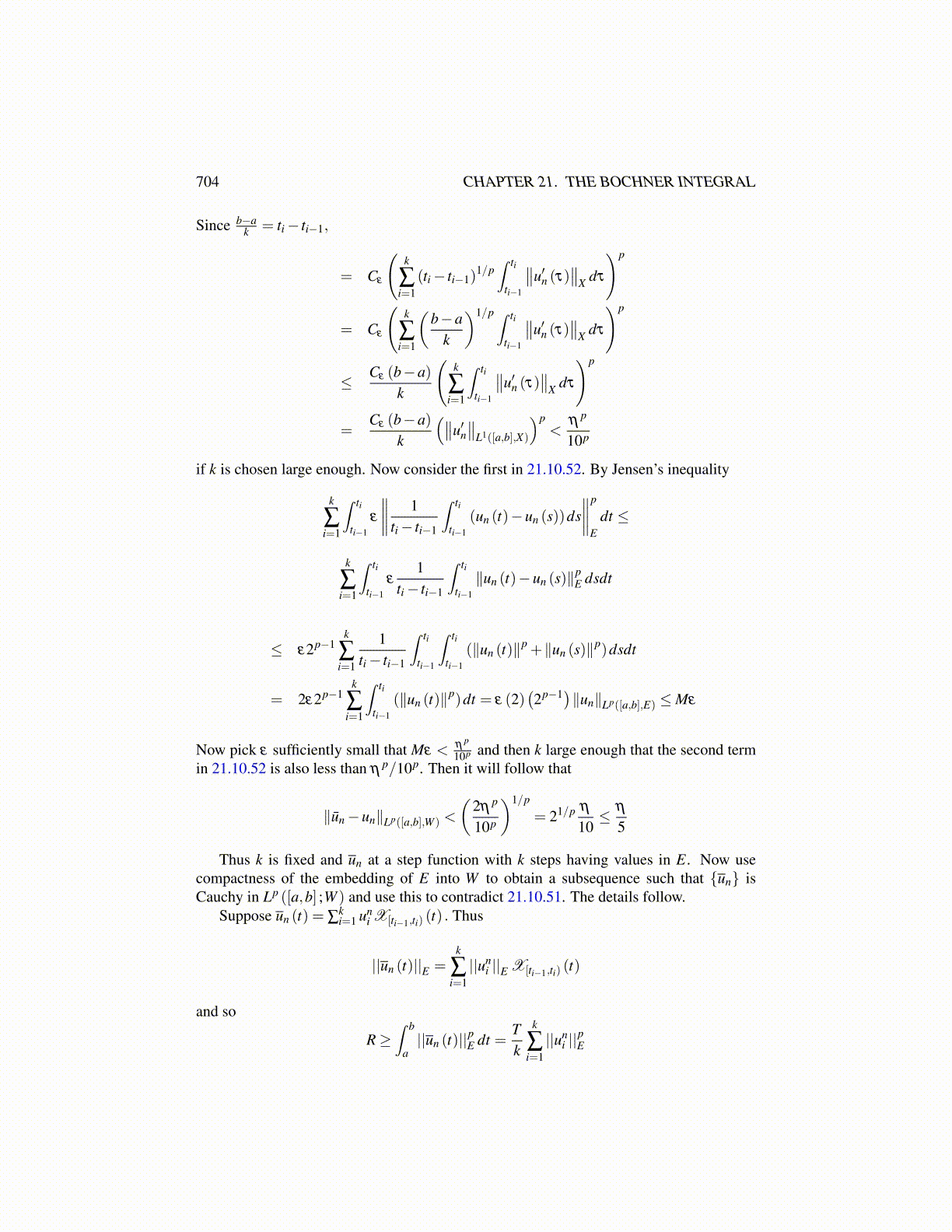
704 CHAPTER 21. THE BOCHNER INTEGRAL
Since b−ak = ti− ti−1,
= Cε
(k
∑i=1
(ti− ti−1)1/p∫ ti
ti−1
∥∥u′n (τ)∥∥
X dτ
)p
= Cε
(k
∑i=1
(b−a
k
)1/p ∫ ti
ti−1
∥∥u′n (τ)∥∥
X dτ
)p
≤ Cε (b−a)k
(k
∑i=1
∫ ti
ti−1
∥∥u′n (τ)∥∥
X dτ
)p
=Cε (b−a)
k
(∥∥u′n∥∥
L1([a,b],X)
)p<
η p
10p
if k is chosen large enough. Now consider the first in 21.10.52. By Jensen’s inequality
k
∑i=1
∫ ti
ti−1
ε
∥∥∥∥ 1ti− ti−1
∫ ti
ti−1
(un (t)−un (s))ds∥∥∥∥p
Edt ≤
k
∑i=1
∫ ti
ti−1
ε1
ti− ti−1
∫ ti
ti−1
∥un (t)−un (s)∥pE dsdt
≤ ε2p−1k
∑i=1
1ti− ti−1
∫ ti
ti−1
∫ ti
ti−1
(∥un (t)∥p +∥un (s)∥p)dsdt
= 2ε2p−1k
∑i=1
∫ ti
ti−1
(∥un (t)∥p)dt = ε (2)(2p−1)∥un∥Lp([a,b],E) ≤Mε
Now pick ε sufficiently small that Mε < η p
10p and then k large enough that the second termin 21.10.52 is also less than η p/10p. Then it will follow that
∥ūn−un∥Lp([a,b],W ) <
(2η p
10p
)1/p
= 21/p η
10≤ η
5
Thus k is fixed and un at a step function with k steps having values in E. Now usecompactness of the embedding of E into W to obtain a subsequence such that {un} isCauchy in Lp ([a,b] ;W ) and use this to contradict 21.10.51. The details follow.
Suppose un (t) = ∑ki=1 un
i X[ti−1,ti) (t) . Thus
||un (t)||E =k
∑i=1||un
i ||E X[ti−1,ti) (t)
and so
R≥∫ b
a||un (t)||pE dt =
Tk
k
∑i=1||un
i ||pE